Potřebujeme váš souhlas k využití jednotlivých dat, aby se vám mimo jiné mohly ukazovat informace týkající se vašich zájmů. Souhlas udělíte kliknutím na tlačítko „OK“.
ASTM D7757-12
Standard Test Method for Silicon in Gasoline and Related Products by Monochromatic Wavelength Dispersive X-ray Fluorescence Spectrometry
Automaticky přeložený název:
Standardní zkušební metoda pro křemíku v benzínu a souvisejících produktů monochromatickým Vlnová délka disperzní RTG fluorescenční spektrometrie
NORMA vydána dne 15.1.2012
Informace o normě:
Označení normy: ASTM D7757-12
Poznámka: NEPLATNÁ
Datum vydání normy: 15.1.2012
Kód zboží: NS-39073
Počet stran: 9
Přibližná hmotnost: 27 g (0.06 liber)
Země: Americká technická norma
Kategorie: Technické normy ASTM
Kategorie - podobné normy:
Anotace textu normy ASTM D7757-12 :
Keywords:
analysis, ethanol, fuel, gasoline, monochromatic X-ray, MWDXRF, silicon, spectrometry, wavelength dispersive X-ray fluorescence, WDXRF, X-ray, ICS Number Code 75.160.20 (Liquid fuels)
Doplňující informace
| Significance and Use | ||||||||||||
|
This test method provides rapid and precise measurement of total silicon in naphthas, gasoline, RFG, ethanol and ethanol-fuel blends, and toluene with minimum sample preparation. Typical analysis time is 5 to 10 min per sample. Excitation by monochromatic X-rays reduces background, simplifies matrix correction, and increases the signal/background ratio compared to polychromatic excitation used in conventional WDXRF techniques. Silicone oil defoamer can be added to coker feedstocks to minimize foaming in the coker. Residual silicon in the coker naphtha can adversely affect downstream catalytic processing of the naphtha. This test method provides a means to determine the silicon content of the naphtha. Silicon contamination of gasoline, denatured ethanol, and their blends has led to fouled vehicle components (for example, spark plugs, exhaust oxygen sensors, catalytic converters) requiring parts replacement and repairs. Finished gasoline and ethanol-fuel blends can come into contact with silicon a number of ways. Waste hydrocarbon solvents such as toluene can be added to gasoline. Such solvents can contain soluble silicon compounds. Silicon-based antifoam agents can be used in ethanol plants, which then pass silicon on to the finished ethanol-fuel blend. This test method can be used to determine if gasoline and ethanol-fuel blends meet specifications with respect to silicon content of the fuel, and for resolution of customer problems. Some silicon compounds covered by this test method are significantly more volatile than the silicon compounds typically used for the preparation of the calibration standards. Volatile compounds (for example, hexamethyldisiloxane with a boiling point of 101°C), which typically have boiling points below 170°C can give higher silicon sensitivities than the standard. |
||||||||||||
| 1. Scope | ||||||||||||
|
1.1 This test method covers the determination of total silicon by monochromatic, wavelength-dispersive X-ray fluorescence (MWDXRF) spectrometry in naphthas, gasoline, RFG, ethanol and ethanol-fuel blends, and toluene at concentrations of 3 to 100 mg/kg. The precision of this test method was determined by an interlaboratory study using representative samples of the liquids described in 1.1 and 1.2. The pooled limit of quantitation (PLOQ) was estimated to be 3 mg/kg. Note 1—Volatile samples such as high-vapor-pressure gasolines or light hydrocarbons might not meet the stated precision because of the evaporation of light components during the analysis. Note 2—Aromatic compounds such as toluene are under the jurisdiction of Committee D16 on Aromatic Hydrocarbons and Related Chemicals. However, toluene can be a contributor to silicon contamination in gasoline (see 4.4), thus its inclusion in this test method. 1.2 Gasoline samples containing ethanol and other oxygenates may be analyzed with this test method provided the matrix of the calibration standards is either matched to the sample matrices or the matrix correction described in Annex A1 is applied to the results. The conditions for matrix matching and matrix correction are provided Section 5, Interferences. 1.3 Samples with silicon concentrations above 100 mg/kg can be analyzed after dilution with appropriate solvent. The precision and bias of silicon determinations on diluted samples have not been determined and may not be the same as shown for neat samples (Section 16). 1.4 A fundamental assumption in this test method is that the standard and sample matrices are well matched, or that the matrix differences are accounted for (see 13.5). Matrix mismatch can be caused by C/H ratio differences between samples and standards or by the presence of other interfering heteroatoms; observe the cautions and recommendations in Section 5. 1.5 The values stated in SI units are to be regarded as standard. No other units of measurement are included in this standard. 1.6 This standard does not purport to address all of the safety concerns, if any, associated with its use. It is the responsibility of the user of this standard to establish appropriate safety and health practices and determine the applicability of regulatory limitations prior to use. |
||||||||||||
| 2. Referenced Documents | ||||||||||||
|
Podobné normy:
Historická
1.10.2013
Historická
1.5.2013
Historická
1.8.2010
Historická
1.6.2014
Historická
1.7.2012
Historická
15.4.2012
Odebírejte informace o nově vydaných normách ZDARMA:
Chcete pravidelně odebírat informace o nově vycházejících normách z celého světa a to zcela zdarma?
Přihlašte se k odběru. Vše je velice jednoduché a absolutně ZDARMA.
Na výběr máte vydavatele z celého světa.


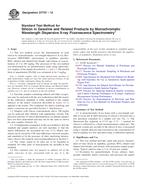
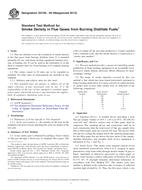 ASTM D2156-09(2013)..
ASTM D2156-09(2013)..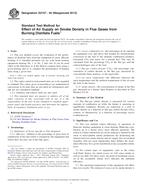 ASTM D2157-94(2013)..
ASTM D2157-94(2013)..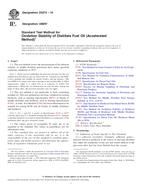 ASTM D2274-10
ASTM D2274-10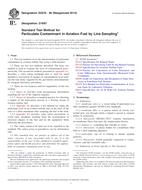 ASTM D2276-06(2014)..
ASTM D2276-06(2014).. ASTM D235-02(2012)..
ASTM D235-02(2012).. ASTM D2386-06(2012)..
ASTM D2386-06(2012)..
 Cookies
Cookies
